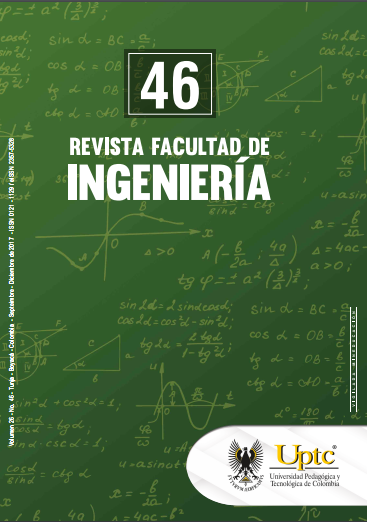Development and testing of a novel steel formwork for casting concrete slabs with different sizes

Abstract
This paper describes and discusses the results of designing and implementing a steel formwork for casting and testing concrete slab specimens with different sizes. The formwork saves space, materials and costs due to the different configurations it may adopt, which allow, for instance, casting slabs with different sizes. The formwork avoids purchasing a greater number of formworks of particular dimensions, which increases costs and the space needed for storage. The formwork performance was assessed through the analysis of numerical results (strain and stress) obtained from simulations using finite element software. Performance was also verified during construction and testing of concrete slab specimens, reinforced with welded-wire meshes or steel fibers. The novel steel formwork herein presented and discussed is currently a patent pending in the Colombian Office of Industry and Commerce.Keywords
Concrete mold, Concrete slab, Energy absorption test, FEM, Fiber reinforced concrete, Flexural test, Slab-on-ground, Steel formwork
References
- M. Ruíz, B. Blachowsky, and B. Spencer, “Use of wireless sensors for assessing modal parameters,” in XVIII National Conference of Structural Engineering, Mexican Society of Structural Engineering - SMIE, Acapulco, Guerrero-Mexico, 2012.
- K. Hossain, S. Gurbani, and M. Anwar, “Performance evaluation of engineered Newark concrete forming tubes for construction,” Technical Report, Ryerson University, 2013, 51 pp.
- ASTM, “Standard practice for making and curing concrete test specimens in the laboratory, ASTM C-192,” American Society for Testing Materials, 2016, 8 pp.
- ASTM, “Standard specification for molds for forming concrete tests cylinders vertically, ASTM C-470,” American Society for Testing Materials, 2015, 5 pp.
- ICONTEC, “Test method for energy absorption capacity of fiber reinforced concrete: NTC 5721,” Instituto Colombiano de Normas Técnicas, 2009.
- EFNARC, “Testing sprayed concrete - Part 5: Determination of energy absorption capacity of fiber reinforced slab specimens: EN-14488-5,” European Federation for specialist construction chemicals and concrete systems, 2000.
- ICONTEC, “Elaboración y curado de especímenes de concreto en obra: NTC 550,” Instituto Colombiano de Normas Técnicas, 2000.
- ASTM, “Standard specification for carbon structural steel: ASTM A-36,” American Society for Testing Materials, 2014, 4 pp.
- J. Carrillo, F. Riveros, and L. Llano, “Molde configurable para elementos de sección transversal cuadrada,” (en proceso de patente, Superintendencia de Industria y Comercio de Colombia, SIC), 2017.
- ACI Committee 318, “Building code requirements for structural concrete and commentary (ACI 318-14),” American Concrete Institute, Farmington Hills, MI, 2014.
- J. Carrillo, and D. Silva, “Flexural tests of concrete slabs-on-ground reinforced with steel fibers,” Revista Ingeniería, Investigación y Tecnología, vol. 17 (3), pp. 317-330, Jul. 2016. DOI: http://doi.org/10.1016/j.riit.2016.07.003.
- J. Carrillo, F. Riveros, and L. Llano, “Dispositivo para sujeción de múltiples transductores de desplazamiento en ensayos de losas de concreto,” Revista Ingeniería Mecánica: Tecnología y Desarrollo, vol. 6 (2), pp. 113-319, 2015.
- J. Carrillo, D. Silva, and M. Sánchez, “Performance of concrete slabs-on-ground reinforced with welded-wire mesh or steel fibers,” Revista Ingeniería, Investigación y Tecnología, vol. 17 (4), pp. 499-510, 2016. DOI: http://doi.org/10.1016/j.riit.2016.11.009. DOI: https://doi.org/10.1016/j.riit.2016.07.003
Downloads
Download data is not yet available.